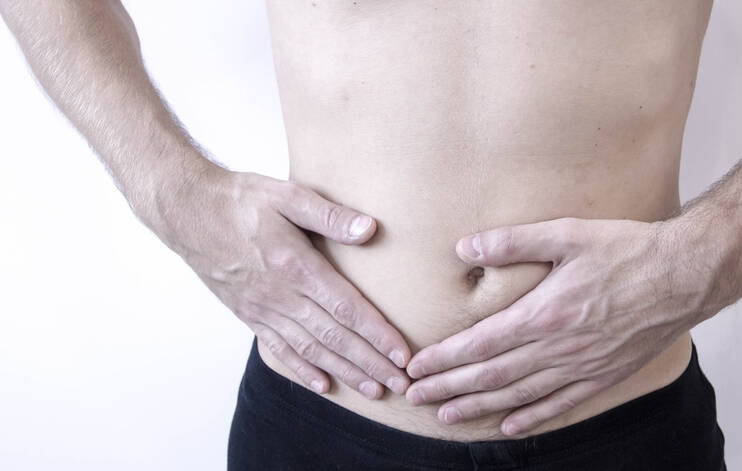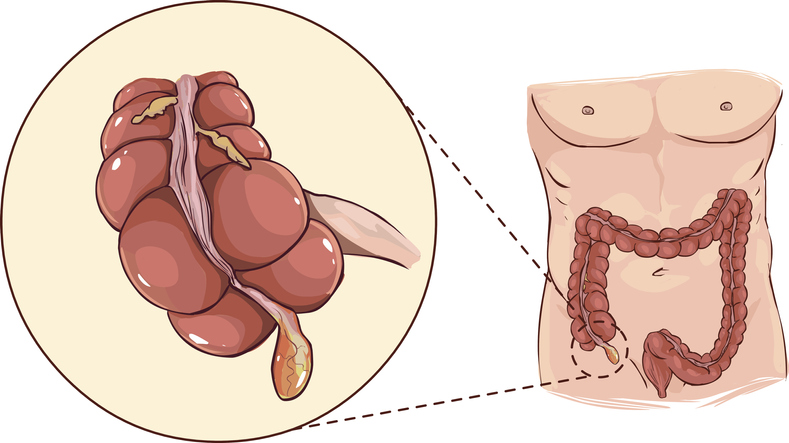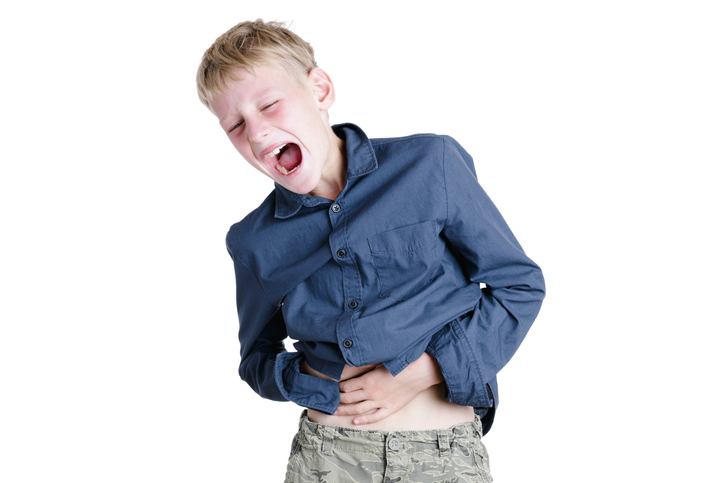- hopkinsmedicine.org - Appendicitis
- webmd.com - Appendicitis
- mayoclinic.org - Appendicitis

Appendicitis is inflammation of the appendix, also called vermiform appendix, cecal appendix, vermix, or vermiform process. Appendicitis mainly affects children.
Appendicitis is an inaccurately and popularly named inflammatory disease that affects the part of the appendix referred to as the appendix, also called the vermiform appendix, a finger-like, blind-ended tube.
Appendicitis acuta or appendicitis.
Appendicitis predominantly affects children and younger adults. However, it can occur at any time of life.
Appendicitis is classified as acute abdomen. It has an acute, i.e. a sudden, progression. In other cases, it is chronic.
The problem is the emergence of complications. These result from damage to the intestine due to inflammation and swelling. Perforation, i.e. a breach of the intestinal wall, causes inflammation in the abdominal cavity, which can be life-threatening.
For this reason, delays in diagnosis and treatment are risky.
The appendix is the beginning part of the large intestine. The end of the small intestine is connected to it. It continues through the ascending part of the colon - the colon ascendens. It is approximately 6 to 8 centimetres long and 6 to 7.5 centimetres wide.
Another medical term for the appendix is the caecum/cecal appendix.
Where is the appendix?
It is located in the right lower abdomen, specifically at the junction of the small and the large intestines.
In Latin, appendix means "appendage".

The appendix vermiformis, or vermiform appendix, is a finger-like tube, a blind-ended process of the caeca. In most cases it is 5-10 centimetres long. It is as thick as a pencil = its outer width is about 7 millimetres. It enters the caecum through a circular opening.
The appendix is known to grow to over 20 cm in length.
Its wall has roughly the same structure as the wall of the large intestine. However, lymphoid tissues are found here to a large extent. For this reason, it is referred to as the abdominal tonsil.
The position of the appendix in most cases follows the course of the colon. Different places of its deposition are described.
| Name | Description |
| Positio pelvina |
|
| Positio retrocaecalis |
|
| Positio ilocaecalis |
|
| Positio laterocaecalis |
|
| Positio subcaecalis |
|
| Positio praecaecalis |
|
| Subhepatic |
|
| Left-sided |
|
| Less common |
in these cases the course is also atypical, it may mimic another disease
|
In terms of digestion, it has basically no functions.
However, the appendix has been found that there is a reservoir (storage) of natural intestinal microflora and has an important role in the body's defenses. In other words, it is important for human immunity.
Numerous lymphoid tissue, figuratively described, forms a filter for foreign pathogens. Similar to the tonsils.
Appendicitis is the most common cause of intra-abdominal surgery in children and younger adults (up to about 30 years of age). The cause is inflammation of the worm-like appendage and the resulting symptoms and complications.
In newborns, it occurs rarely and is atypical as it is in toddlers (atypical). It presents with symptoms typical of a febrile illness.
In preschool and school-age children, the course of the disease is typical. Children are at higher risk of rupture, or tearing, due to the smaller diameter of the appendix.
In the elderly, the course of the disease is atypical. This is due to an increased pain threshold and an absence of a rise in body temperature. Appendicitis is rarely assumed, because of the mild discomfort and atypical course.
Pregnancy
The appendix is pushed higher in the abdominal cavity. This is caused by an enlarged uterus, which displaces the intra-abdominal organs, and therefore the intestines. The pain moves to the middle and upper part of the right side of the abdomen.
In girls and young women, delays in treatment and the occurrence of complications can be the reason for infertility.
Why does appendicitis arise?
The short answer is:
The cause of appendicitis has not yet been accurately described.
However, it is believed that the main role in the outbreak of inflammation is due to obstruction of the lumen, i.e. it is a blockage of the appendix.
Appendiceal blockage occurs in up to two-thirds of cases.
This blockage subsequently causes increased pressure on the wall of the appendix and its blood vessels. The latter is the reason for ischemia, i.e. a restriction in blood supply to this part of the appendix.
Inflammation, swelling and consequently mucosal damage (ulceration) occurs.
The outbreak and spread of inflammation is facilitated by the colonization of the appendix by microorganisms - the normal natural microflora present under physiological circumstances.
The risk is the rupture of the inflamed appendix and the spread of inflammation throughout the abdominal cavity, peritoneum. This condition is life-threatening.
Inflammation of the appendix is differentiated into:
In another case, a periappendicular abscess may form.
The inflammation spread beyond the appendix, however, was successfully contained. An abscess, a circumscribed sac (pouch), was formed.
Appendicitis - risk factors:
A well-known symptom of appendicitis is pain in the lower abdomen on the right.
However, it's not as easy as rumoured.
In the case of the occurrence of typical difficulties, symptoms such as:
Children typically protect the painful area.

So, it is already clear that pain in appendicitis occurs first in the upper abdomen. Subsequently, only during the first hours it moves to a familiar place - to the area of the right lower abdomen.
The pain moves from the upper to the lower within about six hours.
As mentioned above, in the elderly, the pain may be of lower intensity and without an accompanying increase in body temperature. In pregnant women, the pain due to uterine enlargement moves to the higher parts to the right of the abdomen.
Pregnant women are affected by appendicitis quite often. So are children and the young.
Atypical discomfort may be present depending on the position of the appendix. For example, irritation of the bladder occurs when it manifests itself in dysuric discomfort (as in cystitis).
Alternatively, irritation of the rectum is present. This is manifested by tenesmus (a state of painful urge to pass stool) and diarrhoea.
Therefore, especially in the period of pregnancy, early examination is important. The presence of a combination of several symptoms, their temporal sequence lead to suspicion. A professional diagnosis and, on its basis, appropriate treatment are important.
Diagnosis is based on medical history, clinical picture and various examinations. These are intended to guide differential diagnosis, i.e. differentiation from another disease.
Read also: what all hides behind the symptom of pain in the lower abdomen.
The imaging methods of first choice are sonography (ultrasound) of the abdomen and CT (computed tomography). CT has the highest diagnostic yield. X-ray to rule out another cause.
It is also important to take blood for laboratory examination. Inflammatory parameters are monitored, i.e. elevated CRP or leukocytosis - an increase in the number of white blood cells.
Pain occurring in the typical locality helps in diagnosis. The location of the appendix is determined with the help of two points:
| Name | Description |
| Zelenka's sign | In the initial stage, a push in the right lower abdomen causes pain around or above the umbilicus. |
| Blumberg's sign | After pushing and relaxing the abdomen, pain occurs at the site of inflammation (in the first lower abdomen). |
| Plenies sign | Pain present on finger tapping test. |
| Rovsing's sign | Pain in the right lower abdomen is present when pressure is created in the left lower abdomen. |
| Psoas sign | With hyperextension or flexion in the hip joint, pain is present at the site of inflammation of the appendix. Mainly at the location of the appendix in the positio retrocaecalis. |
| Obturator sign | Abdominal pain on abduction, flexion and internal rotation at the hip joint. With the location of the appendix in the positio pelvina. |
| Aaron's sign | Pressure on McBurney's point will cause pain in the epigastrium - above the stomach. |
Similar difficulties can occur with other diseases.
Examples include:
In acute appendicitis, the course of the disease is rapid.
From full health, discomforts such as pain in the area above the stomach, lack of appetite, nausea come on. Pain may also be present throughout the abdomen.
Gradually - over 12 to 24 hours, the pain moves characteristically to the right lower abdomen.
Associated with an increase in body temperature, straining to vomit to vomiting. Constipation and cessation of winds or, conversely, diarrhea may be present. Inflammatory parameters rise.
As already mentioned, an atypical course is usually present in newborns, toddlers, the elderly or pregnant women.
The risk is the formation of adhesions, abscess, inflammation or rupture of the appendix. Then the health condition is complicated by spillage of intestinal contents into the abdominal cavity and subsequent peritonitis.
The chronic form of inflammation is less common.
It is accompanied by pain of low intensity. The pain in this case persists for more than 2 days - even weeks, months or years.
It is reported to be a consequence of overcoming acute appendicitis or recurrent (returning) appendicitis.
Most often, partial or complete obstruction, i.e. blockage, of the appendix outlet is the cause. This is due to various causes, examples are overproduction of mucus, coprolites, foreign body, irritation of the intestine by a stone or seeds, kinking of the appendix.
Treatment of appendicitis: drugs and surgery
Show more